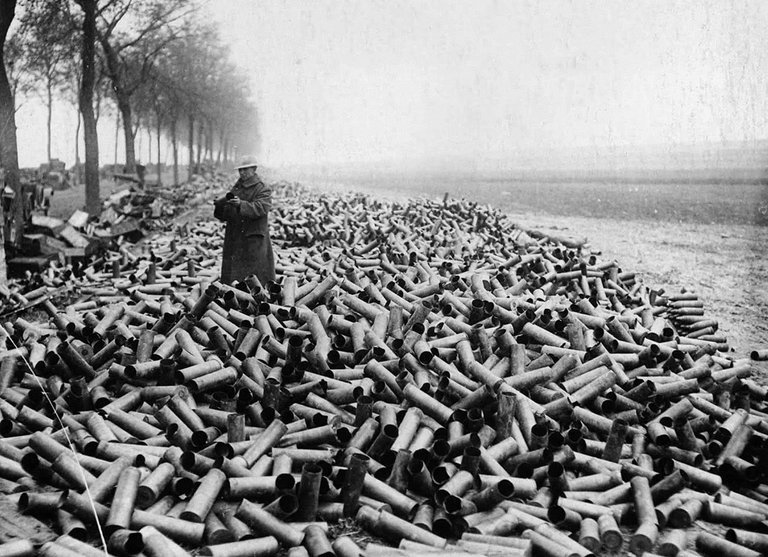
An American corporal aims a Colt M1895 atop a Sri Lankan elephant. The reason why the corporal is atop the elephant is a mystery but elephants were never a weapons platform adopted by the US Army. It’s probably a publicity picture, not something the army would actually try to employ. The elephant would not respond well to the sound of that machine gun a few inches from his ears:
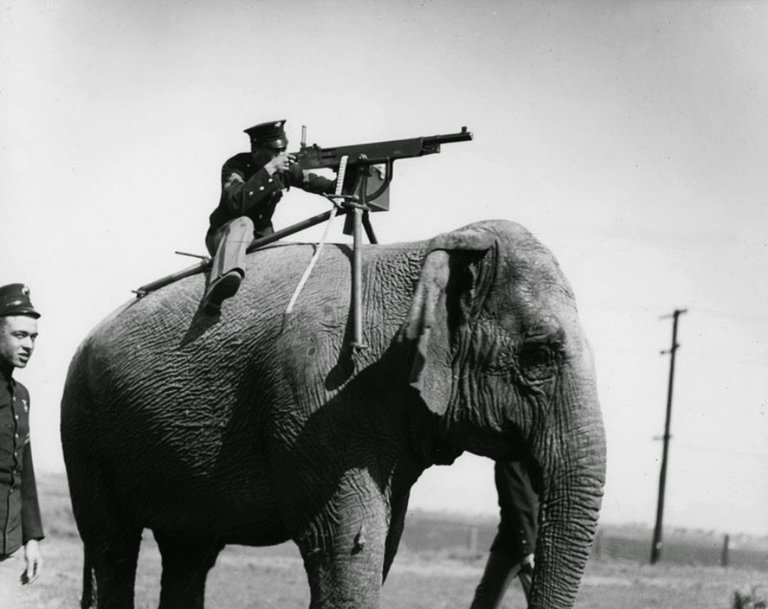
Shell shocked soldier in a trench during the Battle of Courcelette (France) in September 1916. His eyes express the madness of the war. The soldier looks like he has gone insane from what he has seen. In that moment in time everything he’s been raised to work within, the social constructs which make up every part of his life just exploded and shattered to nothing, and he’s lying there, slumped in a trench, afraid for his life, hearing and seeing death around him, his entire psyche broken. Even more haunting when you think that people didn’t smile for the pictures back then:
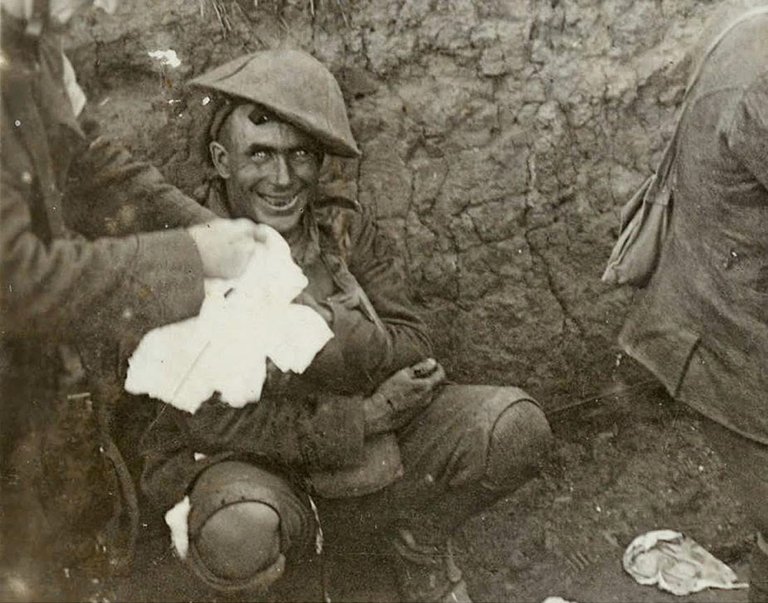
In October 1918, he was temporarily blinded by a British chlorine gas attack near Ypres. He was sent to the military hospital, Pasewalk, Pomerania, where the news of the November 11, 1918, armistice reached him as he was convalescing. To his right you can see his his beloved “Doggie”, Fuchsl:
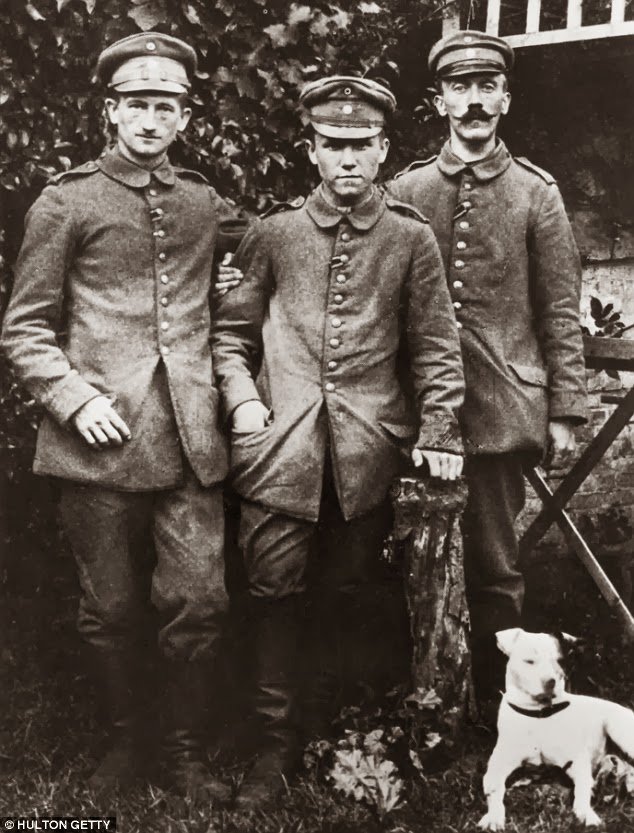
It looks like a thousand yard stare, it’s like there’s nothing there. The rank insignia indicates that he is Austrian-Hungarian soldier, not German, he’s a lance corporal. In case you’re wondering, those lugs on the side of his Stahlhelm helmet were combination air vents and mounting lugs for an extra armor plate for nervous soldiers:
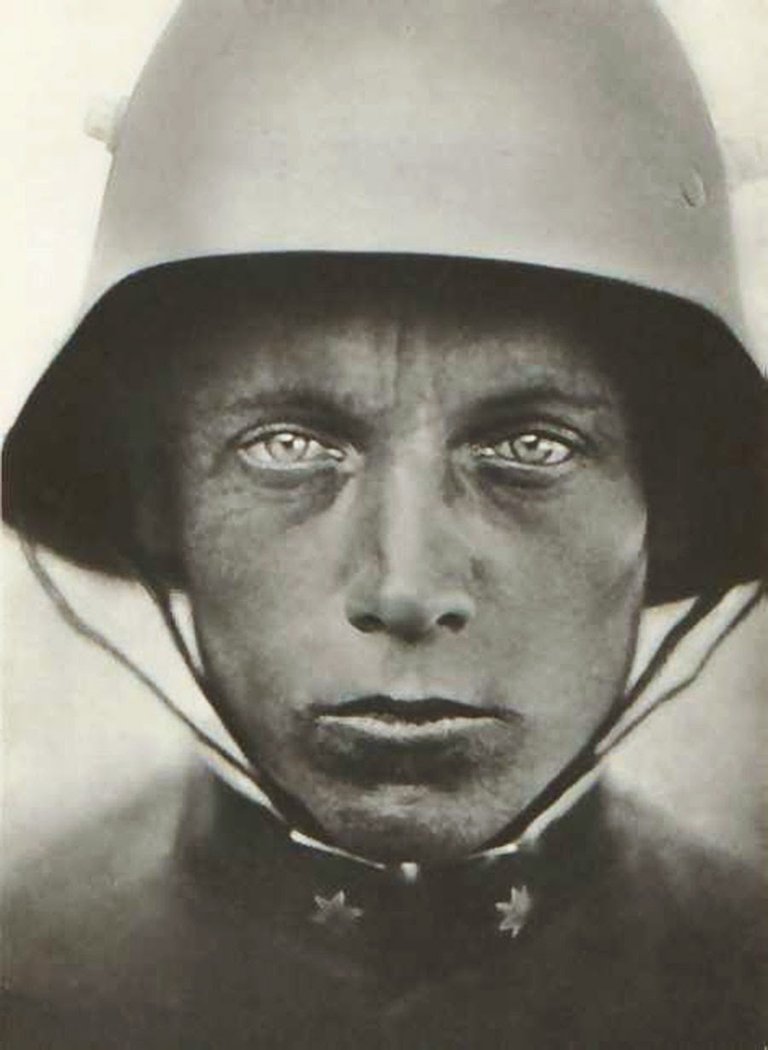
This soldiers are Stosstruppen and are waiting for the assault in their shelter. Notice the different kinds of bayonets issued by the German army. At the end of the war, the German army issued a new kind of saw-bayonet causing more damage to the human body than the classic ones. The soldiers caught carrying such bayonets weren’t taken prisoner but were horribly mutilated. Generally, experienced soldiers managed to provide new recruits with normal bayonets and told them to throw away their saw-bayonet. They all have facial hair without having a beard, because a beard it’s much harder to get a proper seal on your gas mask:
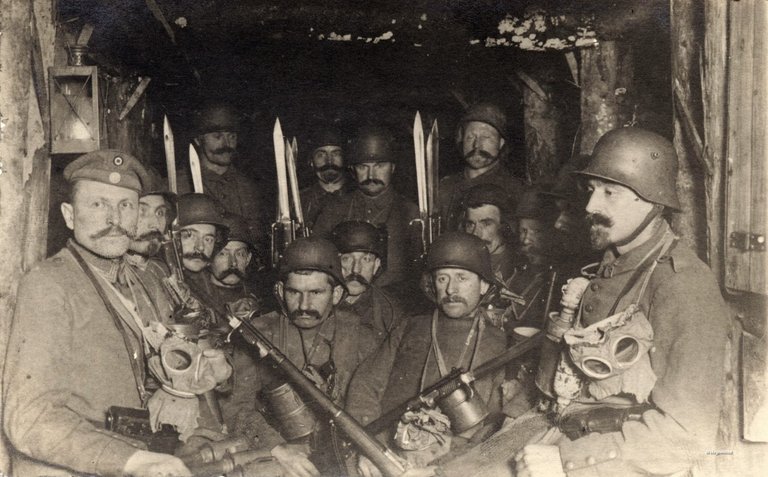
The photo was taken by Munich photographer Heinrich Hoffmann at a rally in support of war against the allies in Munich’s Odeonplatz on August 2, 1914. But it was not until March 12, 1932 that it was published in the Nazi party newspaper The Illustrierte Beobachter, or “Illustrated Observer,” the day before the presidential election, after Hitler’s opponents had attacked Hitler over his flight from military service in Austria-Hungary and questioned his patriotism:
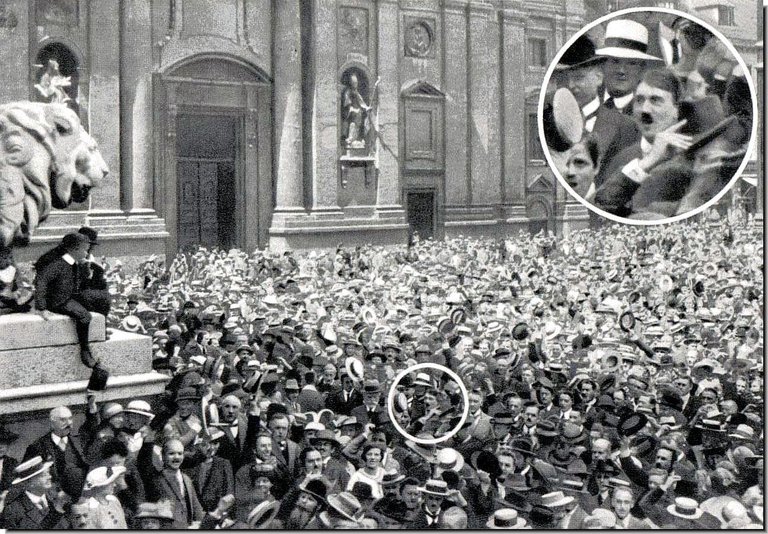
Italian losses during the Battle of Caporetto were enormous: 10,000 were killed, 30,000 wounded and 265,000 were taken prisoner – morale was so low among the Italian troops that most of these surrendered willingly. Furthermore, roughly 3,000 guns, 3,000 machine guns and 2,000 mortars were captured, along with an untold amount of stores and equipment. Edwin Rommel, then an Oberleutnant, captured 1,500 men and 43 officers with just 3 riflemen and 2 officers to help:
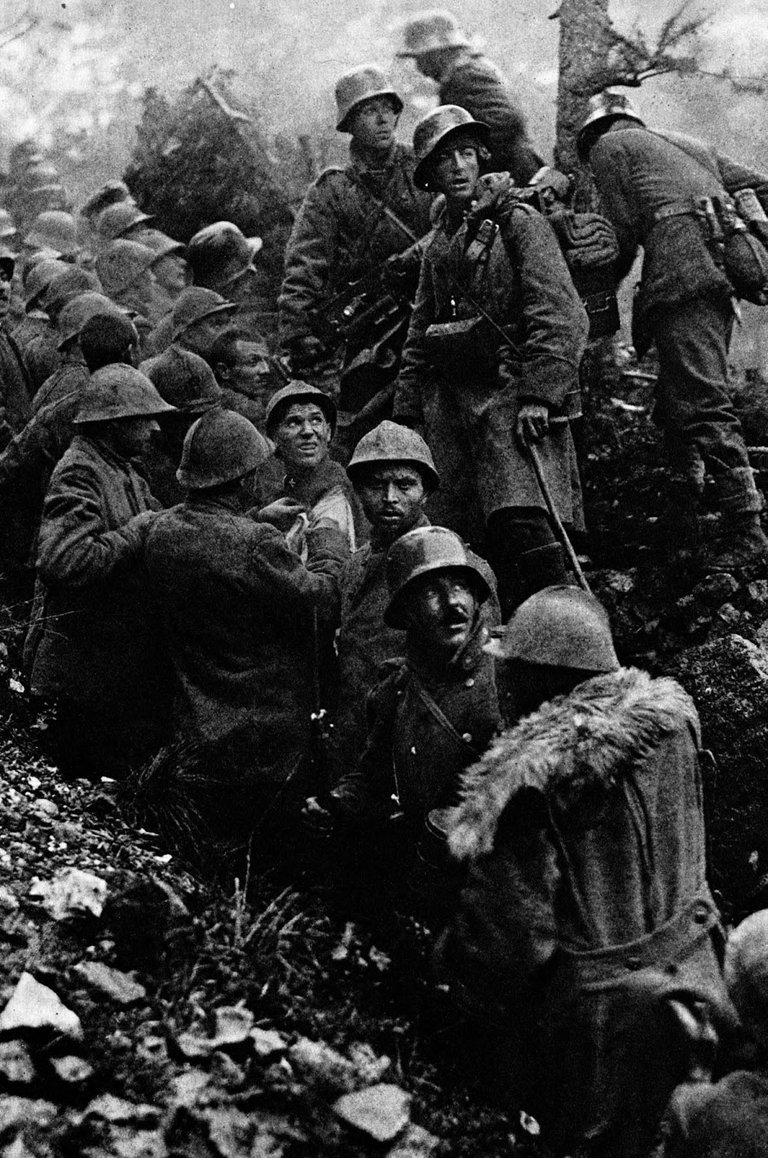
the situation. Patrols could be anywhere from 3 weeks to 6 months and during that time the crew were not able to bathe, shave or change their clothes regularly. The space to live in was small, the working condition were really bad, fumes and smog everywhere. It’s not difficult to imagine how unpleasant life would be for someone who had not taken a bath or had a proper change of clothing for six months:
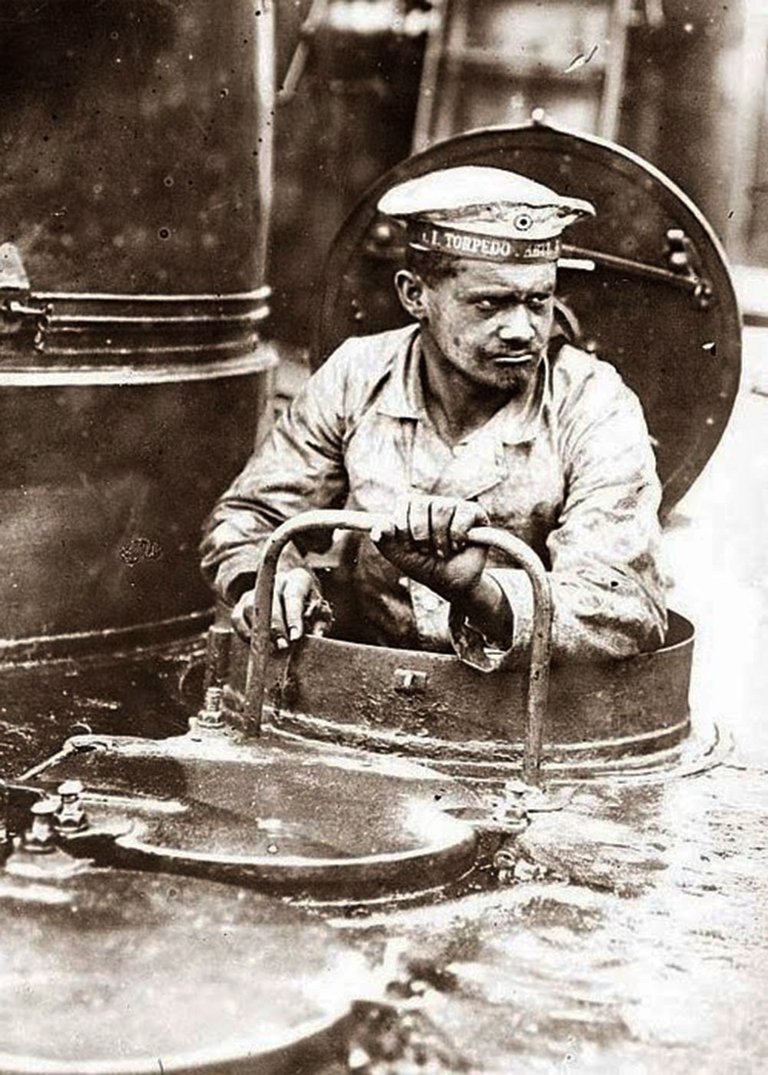
The trench soldier of World War I had to cope with millions of rats. The omnipresent rats were attracted by the human waste of war – not simply sewage waste but also the bodies of men long forgotten who had been buried in the trenches and often reappeared after heavy rain or shelling. Some rat grew to the size of cats. It was not uncommon for rats to start gnawing on the bodies of wounded men who couldn’t defend themselves. Many troops were awakened by rats crawling across their faces. Trench conditions were ideal for rats. Empty food cans were piled in their thousands throughout No Man’s Land, heaved over the top on a daily basis:
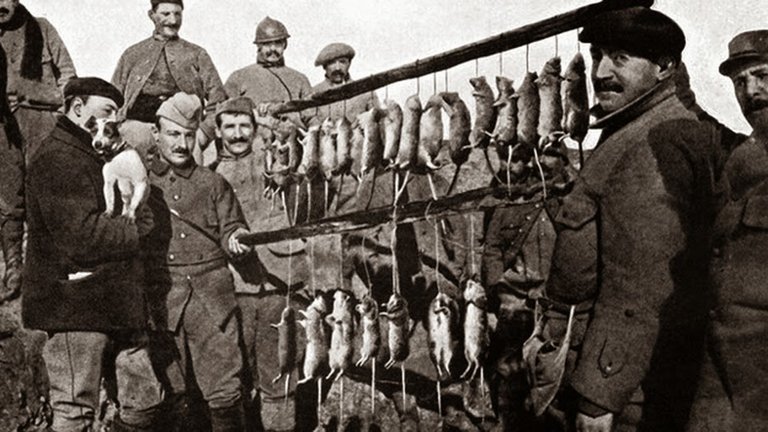
Source for pictures and captions can be found here.
nice post @suitablybored
Thank you!